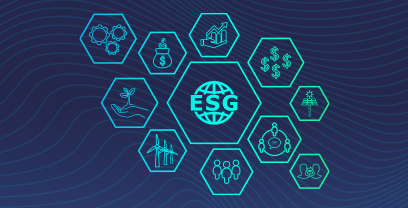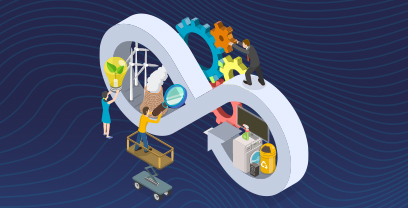|
The Forrester Wave™: Supplier Value Management Platforms, Q3 2024 See Report
Blog »
Carbon Neutrality by 2050: The Net Zero Journey

As a Procurement Leader, carbon neutrality by 2050 should be a central focus and Dr. Natacha Tréhan’s Comprehensive Research offers practical tips to get you on track.
First, let’s start with procurement and how it plays a significant role in reducing the carbon footprint with 3 key areas of impact:
- Actions with suppliers
- Actions on the products and services purchased
- Actions on the way you buy
Part 1. Take Action with Suppliers
In the “cascade” logic of environmental requirements, procurement is on the front line, managing suppliers (scope 3 upstream and part downstream) and getting them to reduce their own emissions. Below, we outline 3 levers.
Lever 1: Engage the suppliers with the highest emissions.
First of all, we must identify the suppliers with the highest emissions either by physical quantity or amounts spent. For suppliers to reduce their own carbon footprint, they’ll first need to calculate it!
They must measure their scope 1 and 2, and ideally their scope 3 and for greatest impact, they will cascade these requirements to their own suppliers. Demand measurement and reductions of CO2 emissions from your suppliers, and you run the risk of becoming the customer no-one wants.
Given the maturity levels in many sectors, a more productive approach is to provide support. This can take the form of workshops, training, technical advice, provision of tools (software, calculation files, etc.), knowledge-sharing, etc.
Lever 2: Coordinate between Clients
As all customers will be asking their suppliers for their CO2 measurements and reduction targets (in addition to all the other CSR requirements), suppliers are likely to be overloaded. The fact that methods are not standardized will exacerbate the impact. This means a significant risk of low commitment rates and low-quality (and therefore unreliable) data.
At a minimum, customers who share the same suppliers must coordinate efforts within their ecosystem. Coordination between major customers and their suppliers, such as “1.5°C Supply Chain Leaders” and digital platforms such as “CDP Supply Chain”, for example, are proving helpful in reducing supplier overwhelm and advancing efforts to achieve emission targets (see box on the right).
Lever 3: Use the Appropriate Digital Tools
Decarbonization will generate a significant increase in the amount of data buyers must manage. It will also require a different approach to supplier strategies. To improve efficiency, quality, and data capitalization, the buyer must have digitized tools at their disposal.
The ideal is a procurement platform that incorporates the elements of supplier decarbonization into each stage of the procurement process. This means having an integrated decision-making tool to avoid having to compile multiple new data sources, new Excel files, new software, etc.
At the supplier level, the platform should enable a company to do the following:
- Select suppliers who have certificates and proof of their climate commitments (e.g.: carbon reports, ISO 14064, objectives validated by the SBTI, referenced by the CDP)
- Source new suppliers with a low carbon footprint
- Integrate carbon criteria in calls for tenders
- Obtain a 360° view in a single ‘cockpit’ of all the risks associated with a supplier: financial, social, operational, geopolitical… and climate!
- Beyond the first-tier supplier, have a supplier map that includes their levels of risk in terms of climate
- Implement and monitor progress plans to reduce CO2 emissions by supplier
Part 2: Act on the products and services purchased
Just because a supplier is committed to a climate approach, that doesn’t necessarily mean its products or services are systematically decarbonized. It is essential to deepen the analysis at the level of the goods purchased.
Having a carbon simulator for procurement means having a carbon footprint per product.
- Make a detailed analysis of the product’s life cycle
- Identify the activity data for each process
- Finally, multiply the activity data by the emission factors
Part 3: Involve Capture Supplier Innovation
In fact, a procurement carbon simulator is decision-making tool that allows a company to make decisions that will optimize the carbon impact/cost ratio.
One of the main obstacles to decarbonizing the economy is the availability of technology. According to the latest study by the International Energy Agency, 46% of the emissions reductions to achieve carbon neutrality by 2050 will be enabled by technologies still at the demonstration or prototype stage.
It will be difficult for a company to solve these challenges by relying purely on internal R&D. Only collaboration with suppliers and participation in sharing networks will enable companies to meet the challenge.
The Procurement function has a key role to play in:
- Identifying new suppliers and technologies for decarbonization,
- Securing supplies required for carbon neutrality.
Conclusion: Procurement plays a key role in reducing Scope 3 emissions
- Supporting suppliers
- The need for coordination between the customers’ procurement departments;
- The use of integrated procurement platforms allowing the collection, analysis and monitoring of all new decarbonization data;
- Setting up carbon simulators;
- Creating cross-functional project groups, as in eco-design.
- The procurement function must also rethink the way it buys, which will profoundly transform its purpose: it no longer buys, it reuses; it no longer favors possession but use.
- Limiting Procurement’s activity to scope 3 is short-sighted, they also play a pivotal role in reducing scope 2 emissions.
- Finally, reducing CO2 emissions and having a positive impact on EBITDA are compatible. The best examples of this positive impact are the reduction of energy consumption or materials used, which are key levers for optimizing purchases.
For more sustainability content, please check our other ESG-related blogs!
EMISSION: IMPOSSIBLE 4 Steps to Kickoff your Decarbonization Strategy
Delivering Step Change Improvements in ESG Performance

Staff Contributors
Contributing writers from inside and outside Ivalua occasionally add items and information to this blog. We are a team who share an interest and curiosity about procurement and spend management.


